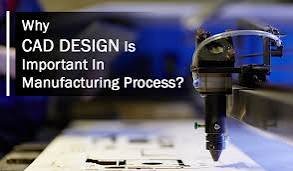CAD stands for Computer Aided Design and it has brought a lot of change in the field of engineering and designing. It enables the generation, customization, and redesign of certain structures using computer-based applications. One of the reasons why CAD is vital in engineering is that the technology is useful in improving the accuracy and efficiency of engineers, as well as the rationalization of their work processes. Due to its effectiveness and efficiency, it is commonly applied in numerous industries ranging from Plumbing Shop Drawing Consulting, and 2D to 3D conversion services to millwork estimations. This paper will explain the relevance of CAD in engineering focusing on its use and importance. Engineering drawing and drafting are inseparable from modern practice, starting from the explanation of the basics and ending with the analysis of the effects of CAD on individual services.
Understanding CAD: The Backbone of Designing Drafting
CAD is the fundamental tool for designing drafting since it furnishes a designer with instruments that allow him or her to accurately and quickly develop technical sketches. The use of this application enables engineers and designers to create clear and realistic 2D and 3D models of any project with preciseness. Working with CAD software is easier than drawing by hand, and the software offers such additional options as the automatic calculation of distances, and layers, and easy editing. This in return helps minimize errors and increases the effectiveness and efficiency of the designs being offered. Furthermore, modifications and updates can easily be made because of the CAD software, hence more iterations can be made. All in all, the paper argues that when it comes to engineering, ‘how’ a particular design is made matters as much as ‘what’ is produced; CAD optimizes this aspect and enhances the profession, freeing up possible mental effort to push for better ideas and solutions, thus improving the eventual engineering solutions.
The Role of 2D into 3D CAD Conversion Services in Modern Engineering
Shifts from 2D plan drawings to 3D CAD models are some of the most important services that are provided in today’s engineering. They convert simple 2D drawings into advanced 3D drawings making it easier to visualize and have accuracy. This conversion enables the engineers to realize the designs more and analyze them, and this consequently enhances decision-making. 3D visualization assists in observing potential problems in the plan, which cannot be seen in a plan view designed in 2D. It plays the role of assisting in arriving at the best designs before developing structures or products in practice. This will lead engineering firms to adopt more 2D to 3D CAD conversion services that will help in increasing precision and at the same time be cost-efficient to available resources and also enhance the quality of the project.
Enhancing Millwork Estimations with CAD Technology
CAD technology has a great impact on improving the estimations of millwork since drawings produced by this technology are accurate and detailed. Hereby, these drawings enable the millwork estimator to compute the actual quantities and costs of material required to undertake a particular project. Such estimates can be made from cash flow details and as CAD software enables easy amendments, such estimates are highly effective throughout the lifecycle of the project. They also help in the provision of detailed 3D models that assist when it comes to visualization permit coordination. As a result of CAD technology, millwork estimators get to fine-tune their estimates, which will lead to successful results and less waste material.
The Benefits of CAD in Streamlining Engineering Processes
CAD has huge advantages from numerous points of view for the organization of engineering. It reduces the chances of making mistakes as far as design and documentation are concerned because it provides more accuracy and precision. CAD features are this in that they simplify many processes that, when done by hand, would take a great deal of time to complete. Organizations benefit from working in teams because everything can easily be shared and worked on simultaneously. CAD also has a high degree of flexibility for making prototypes and is useful for testing as the engineers can alter the design over short periods of timescale. In addition, CAD complements other tools and technologies like Sim/Analysis tools making it easy for engineers to work with. CAD enhances engineering solutions by making them efficient, cheaper, and innovative in terms of the processes to be followed.
CAD’s Impact on Designing Drafting and Millwork Estimations
Many people consider that CAD has a major role in designing drafting and millwork estimations. In drafting, CAD increases the accuracy of the work being produced and enables one to come up with more complicated models. It is easier to make alterations and this helps to maintain a standard with the other drawings. In proposal estimates for millwork, CAD offers line and accurate drawings that will help in the determination of the material that shall be used and the costs involved. The efficiency of Pre-visualization is useful in that it is a planning method that decreases potential mistakes. In conclusion, the applications and integration of CAD technology yield better results in designing drafting and millwork estimations that would result in satisfactory results from clients.
Conclusion
CAD is an intrinsic tool in contemporary engineering since it provides additional tools and functionalities that improve the levels of accuracy, the rate of work, and the cooperation. Starting from designing drafting to millwork estimating the CAD system shrinks the procedures and enhances the results. Other related services include 2D to 3D CAD conversion to improve the visualization and precision of the projects. The advantages of CAD are seen in sundry fields of engineering and therefore it forms a central part of modern-day engineering. In the future as the innovation of technology increases CAD is going to be an integral part of engineering and is going to lead to new heights in the engineering domain. The adoption of CAD should be a goal of any engineering firm that wants to be competitive and who wants to be able to deliver high-quality projects.



